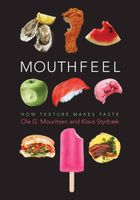Label
All
0
Clear all filters
🔥 Try our grilling cookbooks and save 25% on ckbk membership with code BBQ25 🔥
Changing Texture
Appears in
By Ole Mouritsen and Klavs Styrbæk
Published 2017
An overarching goal of the culinary arts is to alter the properties of the food so that it fractures when chewed, to the extent that it breaks up into pieces, thereby enhancing its taste and maximizing its nutritional value. The best example is cooking raw ingredients so that they are easier to chew. In the case of both vegetables and meat, the cellular structure in the connective tissue is ruptured but, paradoxically, this is not why they are easier to chew. Cooked vegetables deform more readily when chewed because the cooking process has softened the cellulose in the plant fibers making them less stiff. On the contrary, meat that has been heated becomes stiffer because the connective tissue, collagen, denatures, and it is easier to break it apart. We often say that the meat has become more tender. Naturally, there are some types of meat that have so much connective tissue that the teeth are able to tear it to pieces only with the help of a great deal of force to cause deformations.
Part of
Advertisement
Advertisement
The licensor does not allow printing of this title


